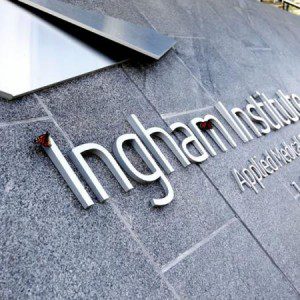The Ingham Institute will unveil its flagship MRI-Linac cancer research technology for Australia’s top corporates and philanthropists including the Ingham family, Perich Group and PwC PricewaterhouseCoopers on Thursday, September 18 at a special event in its high-tech, purpose built research bunker at Liverpool Hospital.
The event will see the Institute’s most generous sponsors and supporters including its ambassador and Channel 9 Today Show co-host Lisa Wilkinson, gathered for the first initial viewing of the MRI-Linac.
A flagship project that will be a first for Australia and one of only three in the world, the Ingham Institute MRI-Linac will combine an MRI scanner with a Linear Accelerator for research into cancer therapy and treatment.
Housed in the institute’s hi-tech research bunker at Liverpool Hospital, the new technology is set to improve the precision and accuracy of radiotherapy. Current radiotherapy practices are limited to account for changes that occur to the location and shape of tumours. By combining an MRI with a Linear accelerator this MRI-Linac system will enable a super-charged view of the tumour to ensure more precise and accurate treatment for cancer patients.
“Current cancer treatments don’t take into account changes that can occur to the location and shape of tumours, which move as a result of breathing, swallowing and other normal body changes. The MRI-Linac will enable us to target the tumour with the radiation beam much more accurately in real-time, and have greater control over the radiation dose,” explained Professor Michael Barton, the Ingham Institute’s research director.
The Ingham Institute’s MRI-Linac project is progressing rapidly with the first half of the technology, the Linac, installed and assembled and the purpose-built MRI scanner due to arrive in November. Final project completion is anticipated at the end of 2014 at which point the Ingham Institute’s team of highly specialised cancer researchers will begin testing and clinical trials, with a view to use the MRI-Linac as a new mode of treatment for cancer patients in the future.
The MRI-Linac team includes some of the best medical minds in the world including Chief Investigator Professor Paul Keall, who hails from Stanford University in the USA, and Senior MR Physicist Dr Gary Liney who was recruited from the UK.
“Once the MRI-Linac is operational it will set a new benchmark for cancer treatment in Australia, with the potential to dramatically reduce side effects and improve patient cancer treatment outcomes for over half of Australian cancer patients,” continued Professor Barton.
Lisa Wilkinson said that it was fantastic to see the Ingham Institute flourishing with such an exciting new development to help combat cancer in Australia.
“Cancer awareness and improving the lives and treatment procedures of Australians suffering from it is something I’m very passionate about,” Wilkinson said.
“The institute’s MRI-Linac technology is new and progressive and has the potential to improve treatment, save lives and reduce the number of people suffering from this awful disease. Congratulations to all of the Ingham Institute researchers involved in this milestone project.”
Institute chairman Terry Goldacre said that he was overwhelmed with the level of interest from generous top-level corporate organisations and philanthropists, many who are key sponsors of the inaugural Ingham Ball event which will be held on March 28, 2015 at Doltone House Hyde Park in Sydney.
“The MRI-Linac has been a long time in the making and it’s fantastic to see it finally coming to fruition,” he said.
“The technology is set to revolutionise cancer research in Australia and globally. In time, this life-saving equipment will be used as a treatment device for cancer patients, creating new hope for Australian cancer sufferers.”

